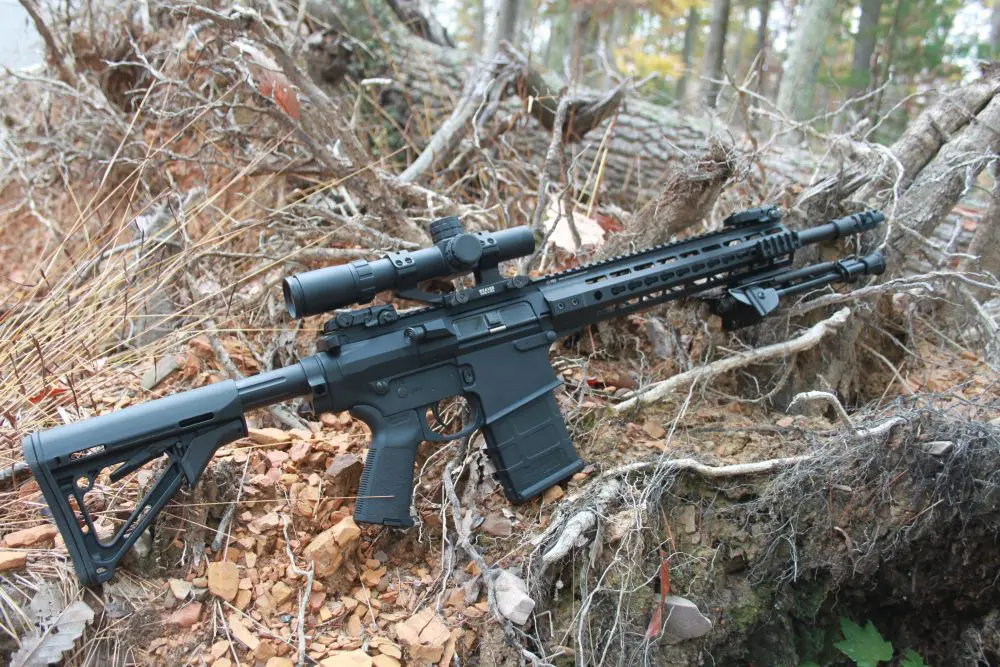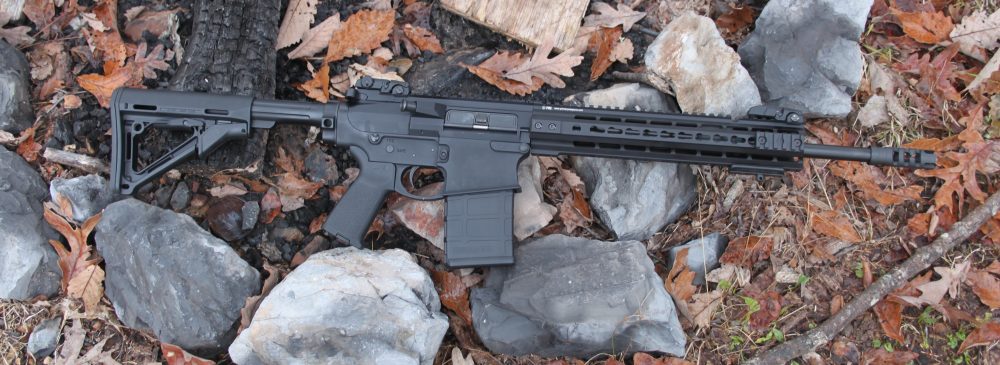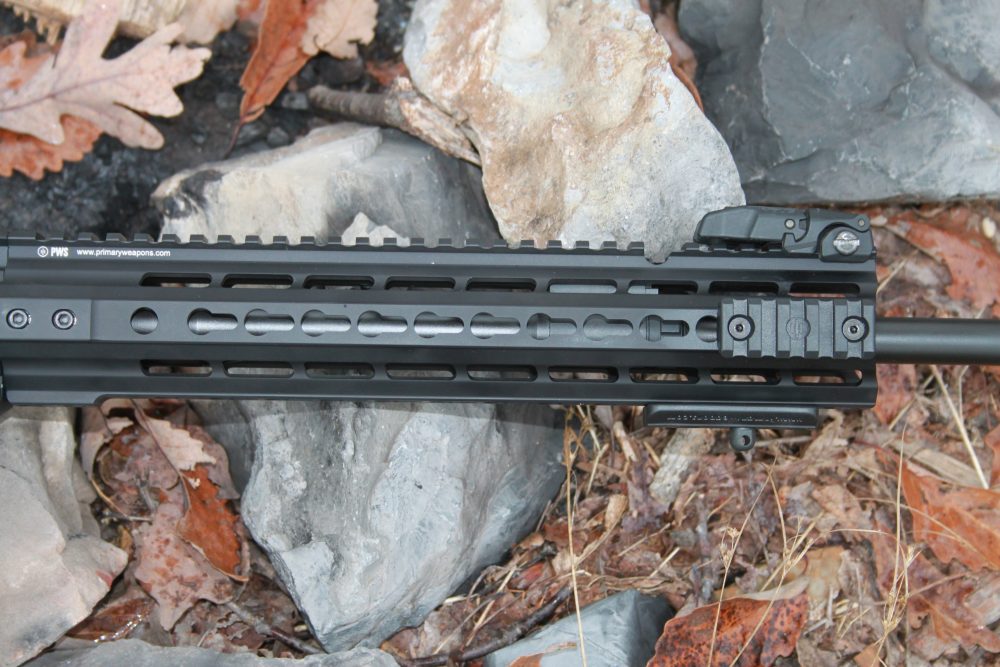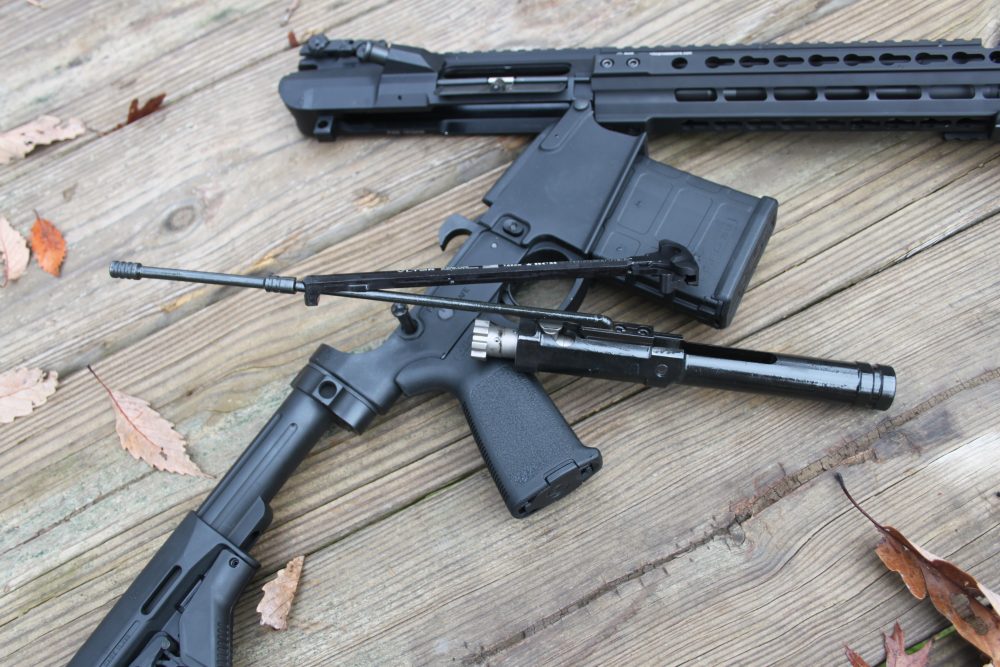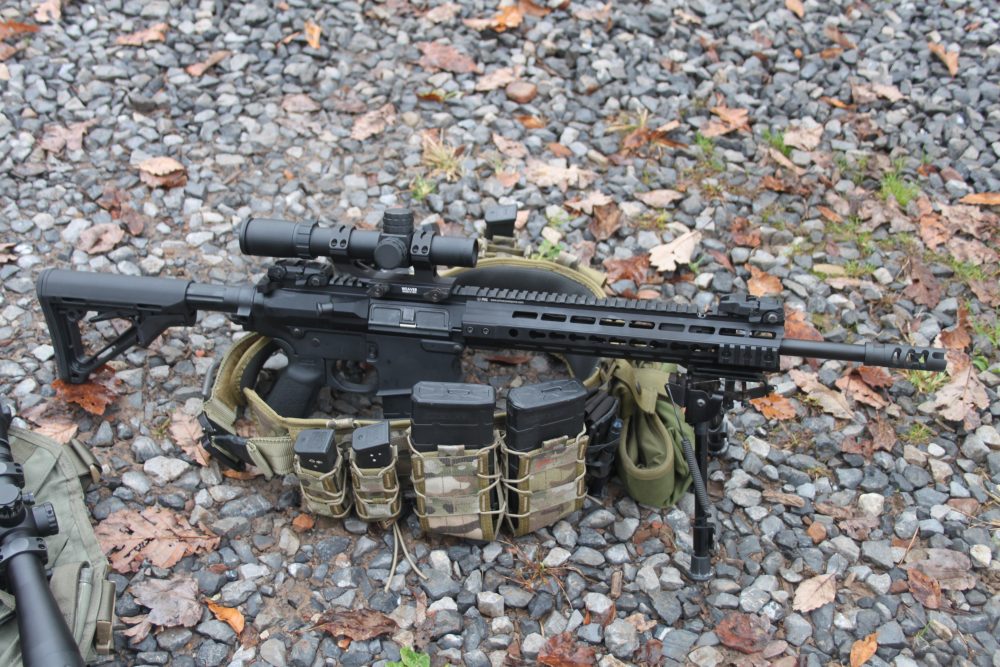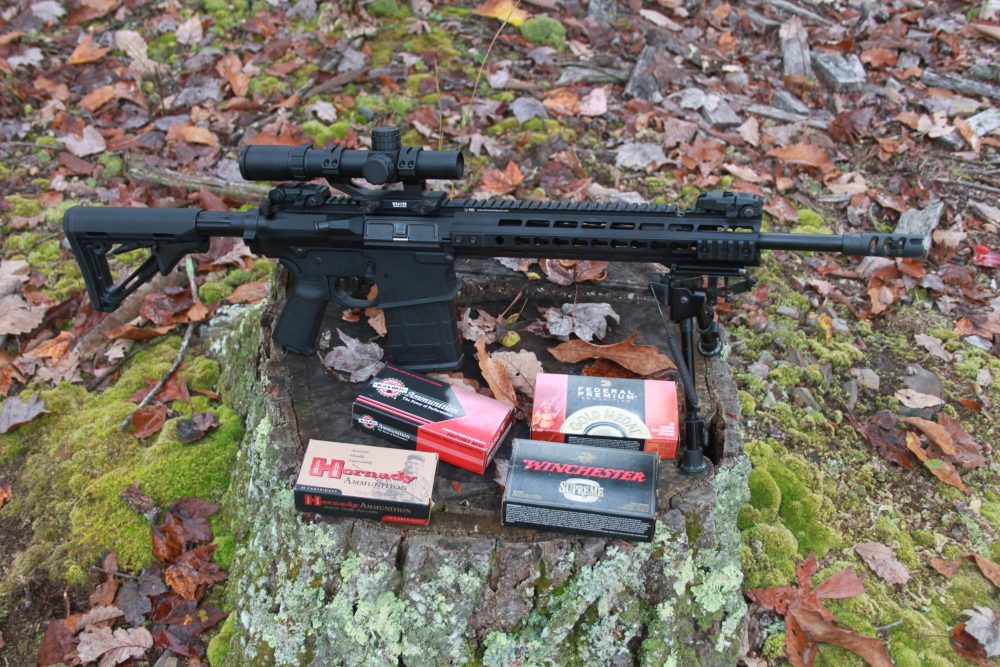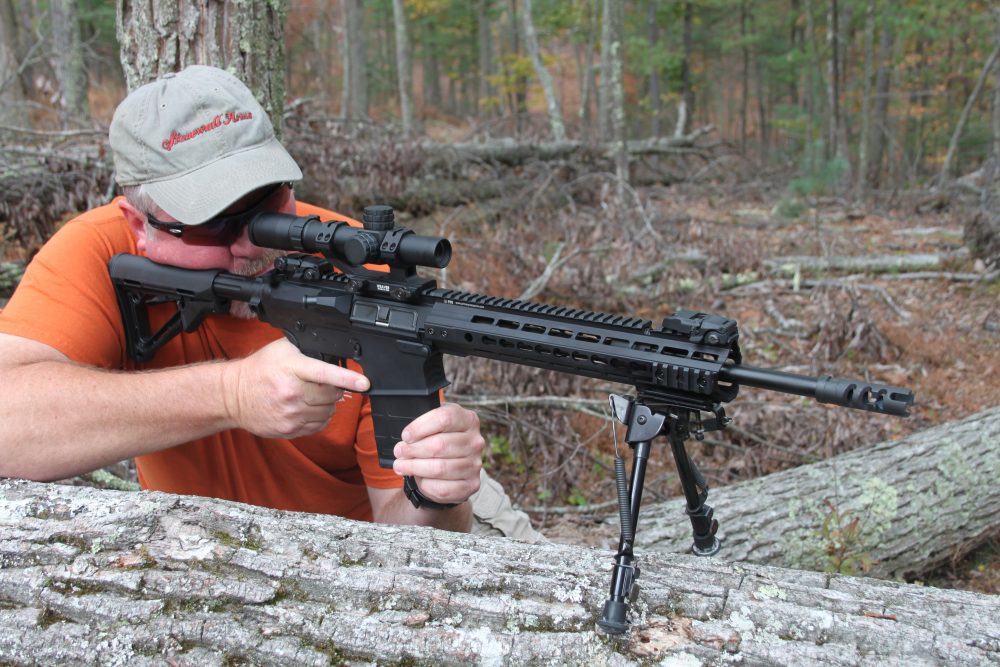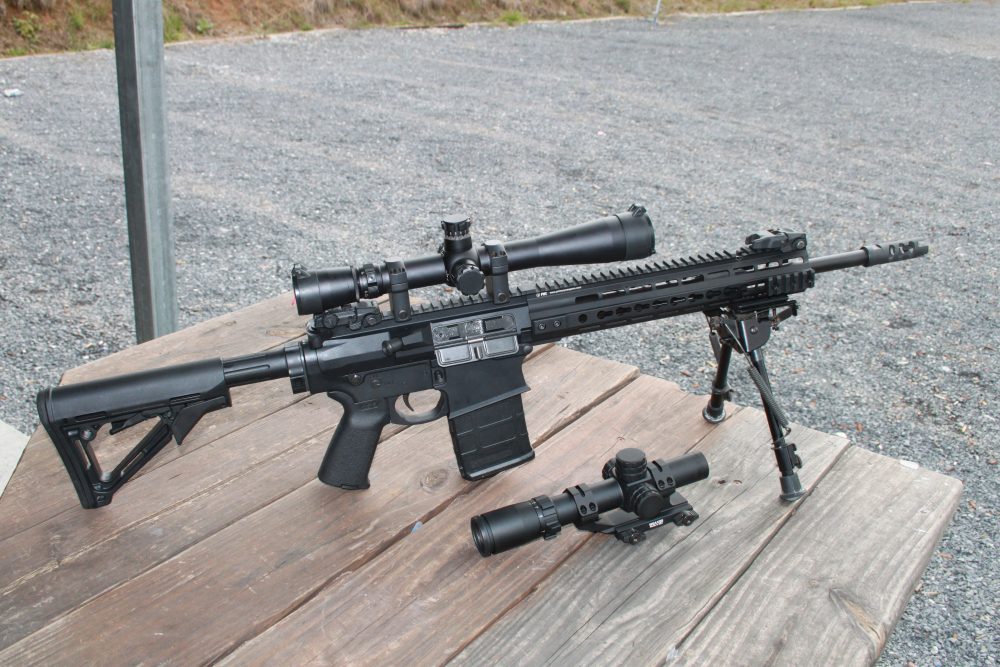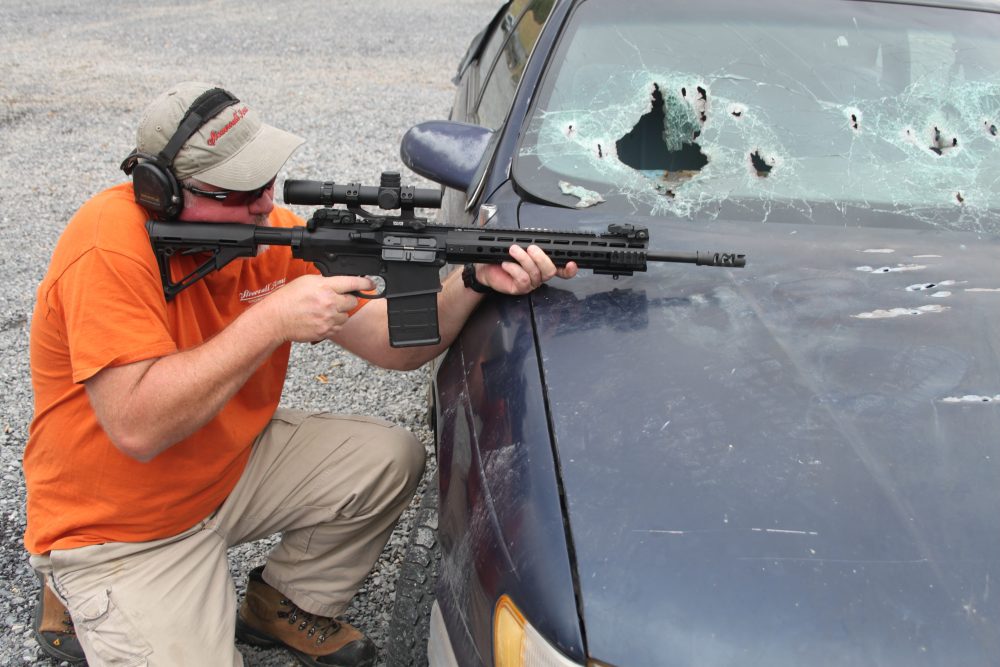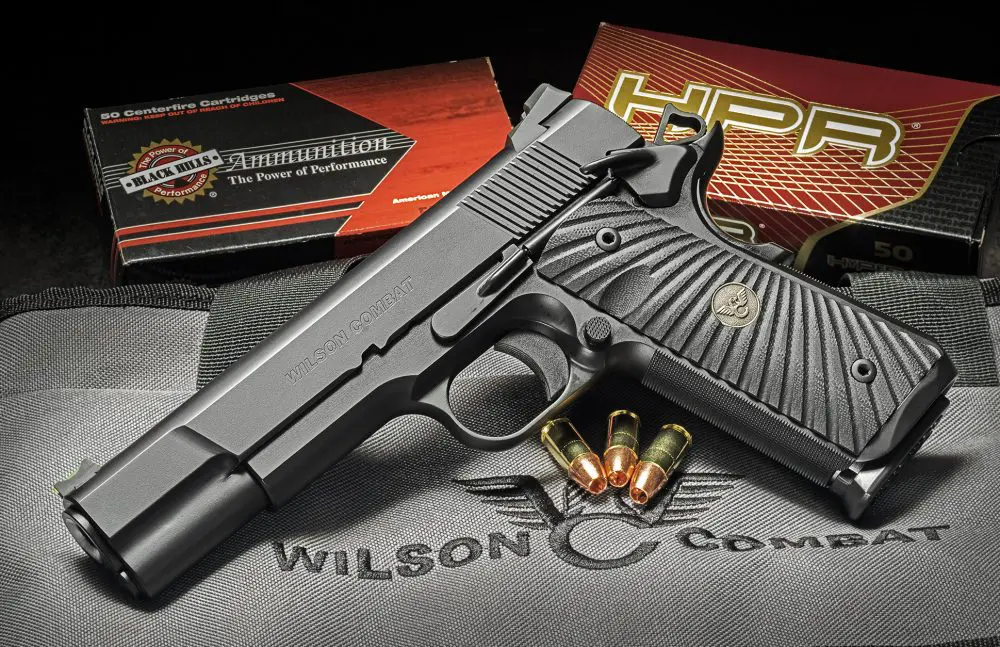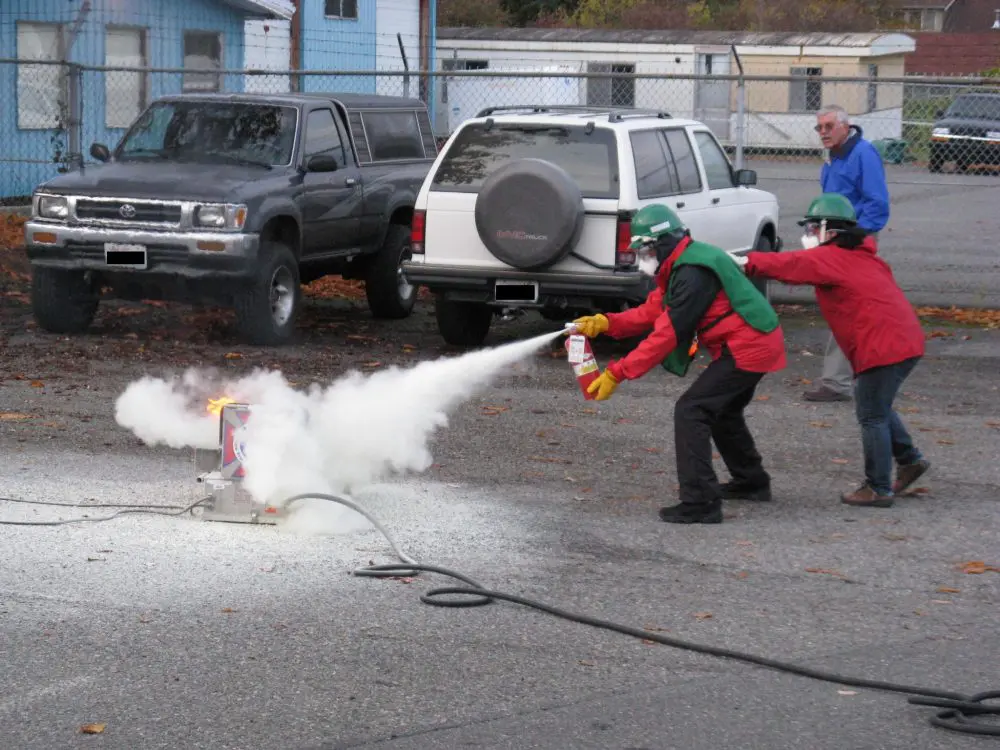It’s rewarding to witness a product’s evolution, especially when one has experience with early models to better appreciate the modifications made. The Primary Weapons Systems (PWS) MK216 MOD 1 AR rifle is a great case in point.
PWS has taken its concept of the AR rifle another step forward with the MK2 MOD 1 .308 Winchester series of long-stroke piston ARs. The PWS MK2 series stemmed from appreciation of AK simplicity and reliability combined with deep-rooted experience with M4/M16 ergonomics.
PWS MK216 as received. PWS uses a forged upper receiver and equips MK216 with Magpul MOE pistol grip and buttstock, Magpul flip-up BUIS, and Magpul 20-round PMAG.
Table of Contents
OPERATING SYSTEM DIFFERENCES
Significant differences are present in the MK2 PWS compared to both the direct-impingement operating system and other piston-driven operating systems. PWS is confident these differences are improvements, addressing reliability and performance issues as well as reduced carrier tilt, cam pin wear and carrier bounce.
Proponents of piston-driven ARs point to greater reliability in adverse conditions and less reliance on routine maintenance compared to the direct-impingement operating method.
The increasing use of suppressors by citizens, law enforcement, and military highlights another advantage of piston-driven ARs—the ability to adjust the amount of gas siphoned to operate the action. Suppressor use increases operating pressures a considerable amount, and being able to quickly turn a knob that turns down the gas vented to the operating rod is a big advantage.
MK216 arrived with PWS’s new lighter free-float handguard, which trims several ounces from overall weight. Handguard features KeyMod interface.
Piston-driven ARs currently also enjoy a perception of better operating reliability in harsh environments, especially as barrel lengths shrink. Gas-piston ARs instinctually appeal to many because hot gases and powder residue are not dumped into the action as with the original direct-impingement (DI) design. Anecdotal evidence of bolt carriers being handled soon after long strings of fire and merely wiped down reinforces this.
Do not take this as lampooning gas-impingement ARs. DI rifles are more robust than most give them credit for, and sub-14-inch rifles are possible with attention to detail by the manufacturer in terms of gas port sizes and timing of the ejection process. Within the piston-driven AR world, there is a less well-known debate happening between long-stroke and short-stroke piston-driven designs.
The Primary Weapons Systems MK2 series represents cutting-edge long-stroke AR design. This is different than the original Stoner designed gas-impingement system as well as the growing number of short-stroke piston ARs arriving on the market.
Long-stroke operating method: PWS MK2 disassembled, with operating rod connected to bolt carrier through charging handle.
LONG-STROKE SYSTEM
A look at a PWS MK2 disassembled with the AK-like operating rod connected to the charging handle and bolt carrier leaves little doubt of the AK inspired PWS design. The PWS long-stroke piston evolved out of early PWS short-stroke conversions by eyeing simplicity and fewer and hardier parts.
PWS MK2 ARs require no tools to disassemble and have fewer maintenance requirements than other piston systems. The rifle’s handguards don’t need to be removed, unlike some short-stroke ARs on the market. Cleaning methods for the PWS MK2 AR are familiar to anyone with AR-15 experience.
Proponents of the long-stroke AR method argue that it does not have multiple parts banging into each other, with the operating rod and bolt carrier group moving together under the impulse of a fired round. This can contribute to minimizing the carrier tilt and carrier bounce typically found on short-stroke AR piston designs. Additionally, the parts used are larger and thus more than likely robust in the long term.
High Speed Gear patrol belt configured with their Taco magazine pouches, which are perfect for anyone operating with both 5.56mm and .308 Win AR rifles.
OTHER FEATURES
PWS’s designs have continued to evolve. This article explores the latest PWS has to offer with their MK216 MOD 1. The MK216 features a .308 Win chamber and weighs in at 8.75 pounds. A 16-inch 1:10 twist stainless Isonite-treated barrel with attached PWS FSC flash hider gives an overall length of 35.6 inches. The PWS long-stroke piston used with the MK216 is a mid-length variant, which helps smooth out recoil impulse especially when combined with other PWS design features such as the large dwell chamber in front of the operating piston’s head.
The forward canted gas tap directs gas from the barrel for the piston in a forward orientation versus the more typical horizontal or rearward angle. The forward cant also helps minimize carbon build-up on the operating rod.
A new feature on the MK216 MOD 1 is the VLTOR KeyMod 12-inch rail system, which permits the barrel to be free floated. PWS uses a forged upper receiver and equips the MK216 with Magpul MOE pistol grip and buttstock. PWS has eliminated the typical AR castle nut method of attaching the carrier tube to the lower receiver via indexing screws. Instead, PWS has designed an enhanced lower receiver extension (buffer tube) with an extended lip to eliminate carrier tilt adversely wearing on the tube.
Magpul flip-up BUIS iron sights are fitted to the rifle’s top rail, and a Magpul 20-round PMAG arrives with the rifle. An extended BCM charging handle offers the user plenty of purchase to operate the MK216’s bolt group. Lastly, an ALG Defense QMS trigger is fitted into the forged lower receiver.
Premium ammunition from Black Hills, Federal, Hornady, and Winchester was used for evaluating PWS MK216.
SUPPRESSOR USE
Because suppressor use is increasingly popular, PWS wanted to increase the MK1 and MK2’s user friendliness in this area. While the original MK1 could be suppressed by simply changing the buffer weight, this was hardly conducive to on-the-fly mission adaptability. The MK2, on the other hand, cannot benefit from a change in buffer weight to counteract the bolt carrier speed increase caused by a suppressor. Adding more weight behind the bolt group in the form of a heavy buffer will not slow the MK2’s bolt down like it will in an AR-15 platform. This is due to the heavy mass of a .308 bolt group.
As a result, suppressing a .308 AR-type rifle is difficult. There is simply too much gas volume and pressure to allow for proper functioning without some kind of gas adjustment to account for the suppressor. The need for an adjustment at the gas block was obvious. PWS’s desire to be more suppressor friendly led them to adopting an adjustable gas block as well.
The PWS gas adjustment is very simple. In the grip panel of the MOE grip is a tool that inserts into the adjustment holes in the gas knob. Just rotate it to the next position/detent until the desired setting is selected for your specific suppressor. An adverse condition setting is not needed, as the PWS system is designed to operate with enough back pressure at all times no matter how dirty or fouled—something to appreciate in a fighting rifle.
There is a standard setting indicated by an “O,” plus three suppressed settings, each distinctively marked, and a take-down setting marked “X.” The PWS knob can be turned in either direction. There is no “closed/single shot” setting. The setting used depends on the suppressor and ammo type being used.
Various shooting positions were adopted with PWS MK216 during visits to Echo Valley Training Center and its multiple ranges.
KEYMOD
The MK216 arrived with PWS’s new lighter free-float handguard, which helped trim several ounces from the overall weight. It features the KeyMod interface designed by VLTOR and now open sourced to the industry.
The KeyMod system is going to bring about a new generation of AR accessory mounts and furniture that connects directly to the handguard instead of needing a rail surface to clamp on to. This keeps the overall rifle package lighter and more compact.
OPTICS
A Weaver Tactical 1-5X with illuminated MDR reticle and Leupold Mark 4 3.5-10X were used for this evaluation.
The Weaver Tactical 1-5X is designed for instinctive close-range/low-magnification situations with illuminated reticles, yet allows shooters to engage targets with greater precision at longer ranges thanks to the 5X. The Weaver Tactical 1-5X scope will strike many as unconventional in terms of commonly associated optics on a military-style rifle. But for law enforcement and private citizens, it’s worth considering as it supplements the PWS MK216’s performance flexibility.
The MK216 mated to the variable-power Weaver optic can handle diverse roles, whether close-range engagements or farther. The concern for operating the magnified Weaver Tactical in a CQB environment is quelled once one becomes familiar with the Bindon aiming concept.
Human vision is based upon a binocular (two eyes) presentation of visual evidence to the brain. The addition of a bright red or green dot in the center of the crosshairs makes it very easy to keep both eyes open, especially at a low power setting. The brain merges the two images.
The Leupold Mark 4 3.5-10X scope served as the primary optic during accuracy testing. Frankly, the Leupold could be left on the MK216, if a user desired, based on the accuracy level exhibited by the rifle. An offset mount bracket featuring a Leupold DeltaPoint or similar pattern red dot offered by other manufacturers would quell any concerns of the Leupold not being conducive to a CQB engagement. The offset mount permits a quick rotation of the rifle in the shoulder pocket a few degrees, accessing the red dot optic with minimal effort or disturbance of handling.
Weaver Tactical 1-5X scope mounted on PWS MK216. Weaver optic is able to handle close-range engagements or those farther afield.
AMMUNITION
To begin with, FMJ loads from Winchester were used for functionality testing. For accuracy, I used Winchester 168-grain Match, Hornady 168-grain TAP, Federal 168-grain Match, and Black Hills Ammunition 168- and 175-grain Match, along with BHA Gold 180-grain AccuBond loads. No ammunition tested produced over 1.25-inch groups at 100 yards.
This is quite the statement for a factory-produced semiautomatic AR. The PWS MK216 proved reliable throughout this evaluation, with over 450 assorted rounds sent downrange.
MAGAZINES
Quality magazines are a linchpin for a reliably functioning semiautomatic or select-fire weapon. As mentioned, the MK216 accepts Magpul PMAG 20-round magazines. Several more Magpul magazines were acquired for this evaluation. The Magpul PMAG 20LR magazine is quickly becoming the standard .308 Win/7.62x51mm AR magazine, with several manufacturers setting up their lowers to utilize the Magpul product.
Leupold Mark 4 3.5-10X was primary optic for pure accuracy tests.
ON THE RANGE
The PWS MK216’s 16-inch barrel combined with 168-grain bullets produced velocity in the low to mid 2,500 fps range when tested over an RCBS chronograph. The PWS MK216 was evaluated at Echo Valley Training Center (EVTC). The rifle was evaluated not only within the 100-yard bays at EVTC firing from barricades and engaging multiple targets, but also back at the prepared firing position line, with targets placed out to 300 yards.
Numerous drills were run involving magazine changes and moving among barricades simulating cover. I used a High Speed Gear (HSG) patrol belt configured with their Taco magazine pouches. These do not compromise retention for the sake of convenience and are perfect for anyone operating with both 5.56mm and .308 Win AR rifles.
I also used a U.S. PALM Multi-Platform Attack Rack chest rig and Eberlestock Gunslinger II pack during evaluation of the MK216.
Sixteen-inch barreled PWS MK216 was not a hindrance when operating around vehicles. Extra power of.308 Win punches through what many perceive as cover against 5.56mm class of cartridges.
SUMMARY
PWS made sound decisions in improving its gas-piston operating system, along with other tweaks such as a sleeker rail system. Combining the AR platform with the increased power represented in the .308 Win/7.62x51mm NATO cartridge is the key to the PWS MK216’s appeal. This is speaking in terms of lethality and effective range, while still allowing for multiple rounds sent quickly downrange if needed in a close-range melee.
Security-conscious citizens should consider using the MK216. For law enforcement, with budgets constantly under pressure, the MK216 could be the answer to fulfilling a multitude of roles: DMR, general-purpose patrol, or entry weapon. This is a positive reflection on the rifle’s accuracy, reliability, handling, and ergonomics.
SOURCES:
Primary Weapons Systems
www.primaryweapons.com
Black Hills Ammunition
(605) 348-5150
www.black-hills.com
Echo Valley Training Center
(540) 450-7998
www.echovalleytrainingcenter.com
Federal Premium Ammunition
(800) 379-1732
www.federalpremium.com
Hornady Mfg. Co.
(800) 338-3220
www.hornady.com
High Speed Gear Inc.
(877) 301-2116
www.highspeedgearinc.com
Leupold & Stevens, Inc.
(503) 526-1400
www.leupold.com
Magpul Industries Corp.
(877) 462-4785
www.magpul.com
U.S. Primary Armament Logistical Manufacturing
(480) 398-3412
www.uspalm.com
Weaver Optics
(800) 379-1732
www.weaveroptics.com
Winchester Ammunition
(615) 258-3340
www.winchester.com
